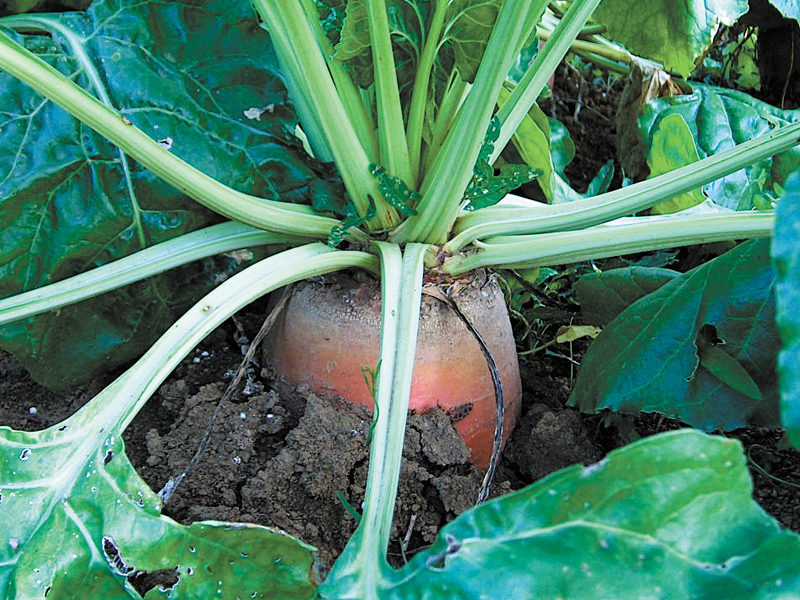When I shared a picture I took of a man with a chicken at a trolley stop, our friend James responded with a single word, “gobsmacked." Such a great word, gobsmacked, from the English-Scottish slang term gob, meaning “mouth” along with the verb smack, like a slap, so it means something so awesome it is like it smacked you in the mouth. So sometimes you just want to grow something jaw-dropping, awesome, hit-you-in-the face, a dahlia blossom the size of a man's head or any vegetable that will gobsmack your friends. For sheer fun, you can't beat Mammoth Red Mangel beet. This is one big beet, with roots weighing up to 40 pounds. It is easy to grow and is completely edible at all stages.
Mangels (Beta vulgaris), are part of a large group of fodder crops that are no longer practical to grow on a large scale for feeding animals. Fodder beets are perfect for small homesteaders or home gardeners who keep any livestock from chickens to pigs to cattle. Mammoth Red Mangel beets contain less water and more sugar than many feeds, and are more nutritious and aid in milk production. These beets yield a tremendous amount of food value per acre.
You can of course, harvest Mammoth Red Mangels when young to eat yourself. Try the roots at a more manageable pound or two. Chop the roots to add to soups, curries and stews. Boil them up and serve mashed with butter, just like potatoes.
Because they have lots of natural sugar, Mammoth Red Mangel beets are used in home brewing, where the sugar is converted to alcohol.
In addition to the enormous roots, the Mammoth Red Mangel provides endless amounts of beet leaves for fresh salad greens, steamed or sauteed with olive oil and garlic. Like all root crops, mangels grow best when planted in full sun to light shade, in deeply tilled, free-draining soil. If your soil has lots of clay or rocks, you can add compost before planting. Sow the seed in early spring on into early summer. They need a long growing season of 100 days to reach full size.
Soak the seeds overnight before planting for best germination. Plant the seeds two inches apart, one-half inch deep. Once the seedlings are up, thin them by cutting with scissors so that eventually they stand eight inches apart.
You can use the thinnings in salads or stir fries.
Beets grow best with steady moisture and no periods of drought. Give your Mammoth Red Mangel beets at least one inch of water every week.
As they grow, they force themselves out of the soil, so often there will be the entire beet top above ground. These beets are a dusky red above ground, and a bright, clear red beneath the soil. The flesh is sparkling white. From seed to fully grown mangel is around 100 days.
Because it is not a hybrid, you can save your own seeds from your Mammoth Red Mangel beets.
This is a biennial plant that will bloom and go to seed after two years. To save seed, select the best roots and let them spend the winter in a box of peat moss in a cool, dark area away from sunlight and drafts. The following spring, replant these roots into the garden. They will bloom and set seeds. And you can plant more Mammoth Red Mangel beets and show off a root as big as a toddler. Your friends will be gobsmacked.




















































